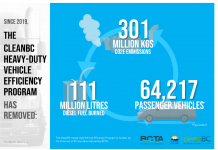An uneasy summer during an uneasy year, 2020 is a year of change and challenge. The world economy has been ravaged, so too the world’s health by COVID-19, a pandemic, a deathly disease that spreads worldwide. But it appears there’s another insidious pandemic spreading its’ tentacles. Throughout the USA, Canada, and Europe too a “social” pandemic of hatred, violence, bigotry, and elitism has erupted and captured headlines to rival those of COVID. The “Racism Pandemic” has turned violent and polarizing, as it seems to spread out of control, further sickening this far too fragile world.
Wikipedia defines racism as the belief in the natural superiority of one race over another. It may mean prejudice, discrimination, or antagonism against other people because they are of a different race or ethnicity. Sadly we can observe racism across a broad spectrum of society. Racism can be insidiously subtle or extremely bold brazen, or anywhere within that broad spectrum. By not confronting its’ malignancy we by default condone it.
Racist beliefs are frequently based on fear or ignorance. They are continued when ingrained in societal beliefs spread from one generation to the next. To define and dislodge it may take generations of understanding where and when and how it occurs, while proactively disarming its’ fuse. What is important is to recognize its’ existence, and expose it for what it is, so that the discussions and changes can then begin.
Sadly the concept of racism is not new, descriptions and writings on the subject can be found going back to the early 1700s. There is a discussion that in the 1500s a key question among Christian religious hierarchy was whether Blacks and “Indians” had souls and/or were human. Jews were the subject of periodic extermination during the middle ages (500-1500 C.E.) in Europe. It included the demand that Jews mark their bodies and those of their children with a large visible badge. Also Jews were herded to specific English towns.
We must understand that racism is not a new phenomenon and it is not a “Black and White” issue. Rather members of any race can in theory harbour racism against any other race. Unfortunately there are no borders here as to who might be the subject of racism. We are all capable of being targets or of targeting others.
Slavery is thought to be the origin of racism in North America. And yet slavery was not an invention of the middle ages or later, by then it had existed for more than a thousand years. However, it started to become an organized trade toward the end of the fourteenth century, when Europeans began to take people from Africa against their will.
The demand for sugar is said to have driven the need for the slave trade. By the early 1700s, Britain had become one of the richest slave-trading nations in the world. Large numbers of slaves were transported from African and Asian colonies to Europe and America.
As many as 30 million slaves may have been captured from West Africa to the Americas. Once captive slaves had to endure horrific conditions that were cruel and inhuman. On their voyage to the Americas, it is thought that one in five died. Upon arriving in the Americas, slaves might only live 2 to 4 years. Such evils seem ghastly by today’s standards, but we should be reminded that these times are only 10 generations removed from present day.
Religions were used as a means to justify racist divisions, classifying people of colour as “pagan or soulless”. Elitism also played a role. Lacking the scholarly benefits of formal education, slaves were considered uneducated and ignorant. Defenders of the slave trade said blacks were “sub-human” and had tails. These ideas were ridiculously backed by church leaders, writers, and academics. This led to a large number of myths about black people that spread throughout Europe and the “New World”. Hard to conceive that institutions such as the church helped to create and become a source for what we now call “systemic racism”.
In the Americas, many were horrified by this brutality and inhumanity and rallied to stop the slave trade. However, slavery meant riches for the slave owners. The economy of the “South” prospered through slavery. Rich plantation owners were in no rush to change their ill-begotten ways and fortunes. The continuance of myths and racist beliefs were used by slave owners to justify slavery. Incredibly some of these beliefs and beliefs have carried to the present day.
More than one war has been fought in the cause of racism. Both the Civil War and WW2 were founded on such failed idealisms and racist beliefs.
Racism exhibits a myriad of the least desirable human traits, jealously, greed, hatred, ignorance, subjugation and torture, just to name a few. In recent memory demonstrations and race riots have become part of the American fabric continuing on from the Civil Rights era. An uneasy tension continues , as violent incidents so very tragically seem to be a part of America’s day to day mayhem. Canada has not been immune.
Racism and in its’ extension, discrimination can happen anywhere in society and can be based on race, colour, ancestry, religion, place of origin, ethnic origin, citizenship, sexual orientation, sex, age, marital status, family status, disability, and even the receipt of public assistance.
We in Canada are protected by both the Canadian Human Rights Act of 1977 and the Canadian Charter of Rights and Freedoms (1982). Regardless these are not guarantees that racism or hatred does not or will not exist in our country simply because there are laws in place. These laws signify that in fact racism is very present in our Canadian society.
Canada is one of the most ethnically diverse countries in the world. At the end of WW2 Canada had a population of 12 million. Today it is 37 million, small by global standards. Our’s is a massive land, yet most of us live within 200 miles of the US border. Post-war high rates of fertility and immigration created a significant population boom. Today our population continues to grow more modestly, mostly as a factor of immigration rather than the birth rate.
In 2019 over 350,000 people immigrated to Canada (compared to 200,000 immigrants in the U.S.). 30,000 were as refugees, Canada now leads the world in refugee resettlement.
As we stir this incredible cultural stew in Canada, we would hope for and believe in tolerance and acceptance of all in our country. Remember that none of us, except for the indigenous First Nations peoples, are truly native here. We are all newcomers to these shores. Unfortunately, this multi-ethnic creation does not blend as smoothly as we would wish.
As we gain new additions to our fair country, we also allow through our doors many who harbour preconceived hatreds and bigotries. While some that have called Canada home for generations now may feel threatened or worse due to the influx of “New Canadians”. Fear is a response to being threatened by the unknown. Many Canadians are fearful or feel threatened when they see “their world” changing. I grew up in Toronto in the 70s when it was barely 2 million, now it pushes towards 7 million, the world’s most ethnically diverse city it is said and also one that has the potential to exhibit racial tensions.
Recently we have heard the words “systemic racism”. An article by the British Guardian newspaper about systemic racism in Canada headlines, “Canada urged to open its eyes to systemic racism in wake of police violence. After a string of violent incidents involving police officers, activists and ordinary people across Canada have joined the global chorus calling for a reckoning with racism, policing, inequality, and the long reach of history.” When foreign print is writing about our home, it is a sign that we should be attending to these issues.
“Systemic racism”, or “institutional racism”, refers to how ideas of white superiority are captured in everyday thinking at a systems level, taking in the big picture of how society operates, rather than looking at one-on-one interactions. These systems can include laws and regulations, but also unquestioned social systems, such as the police who recently have been accused of systemic racism. Acts by the police against indigenous peoples and those of colour in many parts of the country have raised a big red flag.
The Guardian story says, “black and Indigenous peoples in Canada are disproportionately overrepresented in prisons and jails across the country. As students, they face harsher discipline in schools and are suspended at a higher rate than white students. In Toronto, the country’s largest city, black residents are 20 times more likely to be shot by police.”
Bashir Mohamed, a researcher, and amateur historian has highlighted the often-forgotten racist history of western Canada. Saying “Police in Canada are trying to escape this moment of criticism by casting themselves compassionate forces that care about these issues. However, once you actually dig into the data, it shows this is not necessarily the case,”“I think it’s by design that police forces want this information hidden because then it makes them less responsible for actually acknowledging this is a problem.” In other words, if you deny it exists, then obviously it does not exist. The ostrich mentality.
Systemic racism is a sign that shows we have racism problems at multiple levels. How to deal with them, is what we need to discover. As these racism issues become increasingly obvious the answers to solving them sadly are not quite as clear. Racism although definable in words is extremely complex and evolves down to each and every individual. That is because we all have opinions and feelings and for some unfortunately, these include racist beliefs.
The simple truth is that we are not born racist. Racism becomes an acquisition to our psyche. Researches say that as young as 3 months we recognize subtleties of facial difference, colour being one of them. That is not the issue. The actual poisoning or the becoming “racist” is a development that takes time. It involves being influenced. That is how one becomes racist, by learning about prejudice, hate and bigotry, from family or friends, media, the internet or personal events. Racism is learned behaviour and we as adults make the ultimate choice as to whether we are or are not racist. The journey to abolish racism starts with each individual.
In Canada and elsewhere talk of racism abounds. As a conversation on TV, newspapers, and social media. It is not an immersive process, rather one that allows the distance or the separation from the discussion. You can read about it or hear it, or you can turn it off or turn a blind eye to the issue. Like many aspects of our lives, how we deal with racism is a personal issue. Scholars say that we are either part of the problem or part of the solution. If we are invested in our country, then making it a better place to live should be all of our concern. If we want a country without racism, we should all be concerned about how we make it happen.
Canada has invested in the concept of an integrated society. A country of many colours and religions and ethnicities. We promote ourselves as being egalitarian and fair to all. Yet as we increase our ethic diversity we increase the potential for hatred and racism. Why on one hand do we increase the potential for racism and then on the other hand have a hard time accepting that it exists. Could we not bring this to a more open dialogue perhaps as part of school curriculum, where the young cultural mix we are can expose this in a classroom for discussion, learning and enlightenment? Are we brave enough as a society to do so?
COVID-19 is a global pandemic that is less than 1 year old, we are told a vaccine cure may be only a year or two away. Racism is a cultural disease, a pandemic of a different type. Centuries-old and a product of man, over centuries millions have died or suffered. The cure is simple, it is a state of mind and the choice is ours.
























